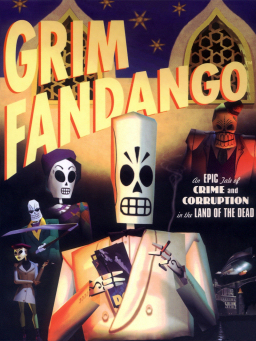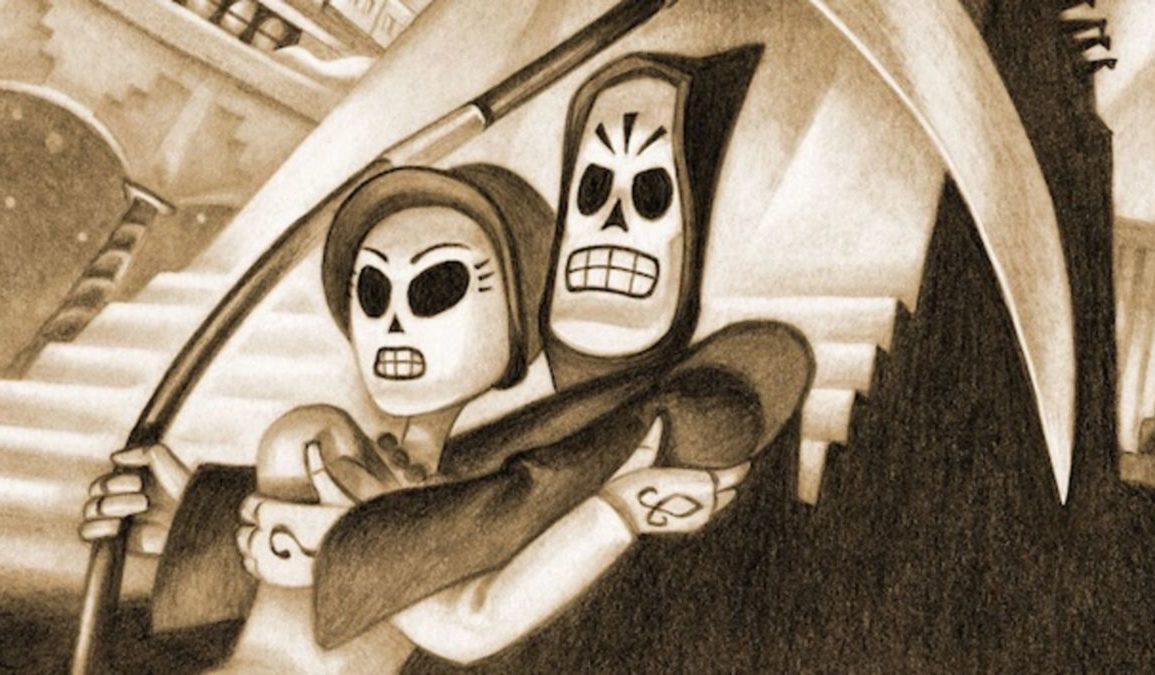
The 1990s were the golden age of point and click narrative adventures, and it’s easy to see why the genre has remained in the imagination of gamers all these years later. Back when the genre rose to prominence, there were precious few genres that offered comprehensive storytelling. RPGs of the time could deliver on the story front, but were all too often fantasy driven adventures. Other than that, strong narratives could be rarely found in platformers, or even a first person shooter.
But it was the point and click genre that really delivered on plot. In the early part of the 90s, games such as Star Trek: Judgement Rites, Gabriel Knight: Sins of the Fathers and Beneath a Steel Sky were popular and well made adventure games, but when it came down to fun, humour and cartoon lunacy, LucasArts were king.
LucasArts adventure games of the 90s really came on leaps and bounds. They kicked off the decade with Loom, The Secret of Monkey Island, Monkey Island II and Indiana Jones and the Fate of Atlantis. There was a huge jump in graphical fidelity and design with 1993’s Day of the Tentacle and Sam & Max Hit the Road, and the genre was then pushed further forward in 1995, with The Dig and Full Throttle both debuting.
But there was a problem, and that problem was from another dimension: the “third dimension”. The PlayStation, Saturn and Nintendo 64 all pushed the boat out in terms of 3D polygonal graphics, and the Saturn and PlayStation excelled in CD quality sound and cutscenes. It felt like the future, and this use of 3D graphics, sound and video allowed developers to produce games with deeper narrative elements.
This took a little shine off the point and click genre, as no longer did deep storylines require you to take on dream logic puzzles, talk to every NPC in the world or click on every pixel to see if it did anything. Speaking from experience, 3D graphics felt so very ahead of their time in the 90s, while 2D graphics felt incredibly outdated, no matter how good or impressive they looked.
So in 1997, LucasArts released their final 2D adventure game, The Curse of Monkey Island. Tim Schafer was a designer at LucasArts during the 90s, having worked on Monkey Island 1 & 2, Day of the Tentacle and his first solo project, Full Throttle. The latter was a critical success for LucasArts, so they had no qualms in naming Schafer as the sole writer and director of their latest adventure title, Grim Fandango.
With more and more games being made with 3D polygons, LucasArts felt it had to move with the times. Many other companies struggled to take their narrative adventures and point and click games 3D, and by the late 90s there were some ropey games in the market. Sierra was famous for the Gabriel Knight series, and while Gabriel Knight 3 was well received, it didn’t match the standard of the earlier 2D games. Sentient on the PlayStation was an early experiment in first person narrative adventure, and while it isn’t bad, it isn’t good either.
So Grim Fandango decided to get rid of pointing and clicking entirely. Instead, the game would be played either entirely with the keyboard or a controller (a point and click mode would be added in the later remaster), utilising a ‘Resident Evil style’ tank control system. This sounds awful, and tank controls definitely are, but the absence of combat really makes tank controls an ideal choice for a controller based adventure game.
Grim Fandango’s strengths lie in pretty much every area of the game. The graphics look absolutely stunning, even in the original 1998 release, and while the remastered version definitely improved them, the simplistic design of the character models and pre-rendered backgrounds make Grim Fandango an absolute looker, even today. Mix that with Peter McConnell’s iconic soundtrack, and you have a wonderfully unique world that Manny and his friends inhabit. Featuring musical styles such as Latin American folk, jazz, swing and big band, the soundtrack was also totally remastered for its re-release.
Grim Fandango also manages to avoid many of the more annoying aspects of 90s point and click gaming, as there’s rarely a time that you’ll need insane dream logic in order to figure out the illogical and obscure puzzles. Sure, there are a couple of puzzles that are tricky, but for the most part it has learned from the mistakes that came before.
Grim Fandango really nails the story and tone. Manny Calavera’s four year journey through the land of the dead, fighting corruption and trying to find the woman he loves is one of the greatest in gaming. It’s fantastically written, and manages to mix comedy and drama all set in a fantastical afterlife. It’s also a closed off story, and an immensely satisfying one at that, and even though it comes to an end, it’ll stay with you for a long time after completion. It has stayed with me for 25 years and counting.
You know what’s not grim reading? The rest of this column.
READ NEXT: Deadly Premonition | Games To Play Before You Die
Some of the coverage you find on Cultured Vultures contains affiliate links, which provide us with small commissions based on purchases made from visiting our site.


